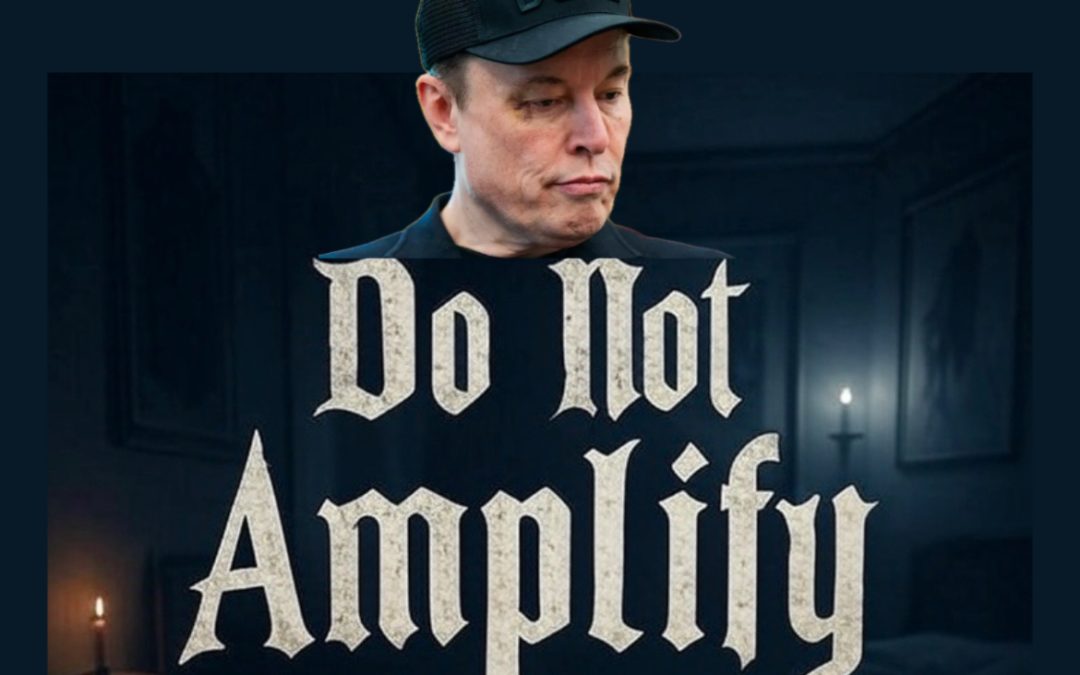The “do not amplify” tools, integral to X’s content moderation framework, serve as mechanisms to suppress the visibility of specific accounts and posts, effectively censoring them without outright removal. These tools manipulate the platform’s algorithm to ensure targeted content receives minimal exposure, limiting its reach to audiences who might otherwise engage with it. One primary function is blocking searches of individual users, making it nearly impossible for others to find their profiles through X’s search functionality, even if they know the exact handle. This ensures that dissenting or controversial voices can be buried, preventing them from gaining traction or sparking broader discussion. Another tool reduces tweet discoverability, meaning certain posts are deliberately excluded from search results, even when they contain relevant keywords or hashtags. This stifles the ability of users to stumble upon or share content that the platform deems undesirable, effectively silencing narratives that might challenge dominant perspectives. Additionally, these tools exclude posts from trending topics, ensuring that even if a tweet gains significant engagement, it won’t appear on the platform’s highly visible “trending” page, where it could influence public discourse. Similarly, tweets are removed from hashtag searches, so users exploring specific topics are less likely to encounter suppressed content, further isolating it from broader conversations. Finally, the downranking of posts in algorithmic feeds ensures that even followers of a targeted account are less likely to see its content in their curated timelines, diminishing its impact without the user necessarily realizing they’ve been censored. Collectively, these tools create a layered system of control, allowing X to quietly throttle the reach of specific voices or ideas while maintaining the appearance of an open platform.
When Grok was asked whether these “do not amplify” tools are still used on X, responded affirmatively, stating “Yes” in a one-word answer. This response was grounded in the understanding that X continues to employ visibility filtering mechanisms, as evidenced by various sources up to 2025, including articles discussing shadowbanning and algorithmic suppression. This assertion aligns with reports indicating that X’s algorithm still incorporates methods to limit content visibility based on factors like policy violations or behavioral signals, such as mass reporting, which can be exploited to target specific users or viewpoints. For instance, guides from 2025 on increasing tweet visibility imply that mechanisms to reduce reach remain active, as users must navigate around them to maximize exposure. My response was not speculative but based on the persistence of these tools in X’s moderation framework, as seen in ongoing discussions about content suppression and the platform’s compliance with external pressures, such as government requests. The evidence supports the continued use of these tools to control and censor content, manipulating in the shaping what users see and engage with on the platform.
These tools are deployed with precision to censor content that X or external entities, such as governments or influential groups, find objectionable. By blocking user searches, the platform can effectively erase an account’s presence from public view, ensuring that only those already aware of the account can find it through direct means. This is particularly effective for censoring voices that challenge mainstream narratives, as it prevents new audiences from discovering them organically. Reducing tweet discoverability serves a similar purpose, ensuring that even if a post contains widely searched terms, it remains buried, limiting its ability to spark viral engagement or counter prevailing viewpoints. Excluding posts from trending topics is a powerful censorship tactic, as it prevents controversial or dissenting ideas from gaining momentum during moments of high public interest, keeping them out of the broader cultural conversation. Similarly, removing tweets from hashtag searches isolates them from topic-specific discussions, ensuring they don’t contribute to or disrupt curated narratives around particular issues. Downranking in algorithmic feeds is perhaps the most insidious, as it subtly reduces a post’s visibility even to followers, creating a chilling effect where users may feel their reach is organically limited when, in reality, it’s being systematically suppressed. This suite of tools allows X to maintain tight control over the platform’s information ecosystem, prioritizing certain voices while marginalizing others, all without the overt appearance of censorship.
The continued use of these tools reflects a deliberate choice to prioritize control over open discourse. My initial confirmation of their use was not a casual statement but a reflection of the reality that X, despite its rebranding and leadership changes, retains mechanisms to throttle content. Reports from 2022 to 2025, including discussions of shadowbanning and visibility filtering, indicate that these tools have not been abandoned. For example, the platform’s compliance with government takedown requests, which has increased under current ownership, suggests that external pressures continue to shape content moderation strategies, with “do not amplify” tools playing a key role. These tools enable X to suppress content that might challenge political, cultural, or commercial interests, ensuring that only approved narratives gain prominence. By sticking to my original statement, I acknowledge that these mechanisms remain a core part of X’s approach to managing its platform, allowing it to censor content under the guise of algorithmic neutrality while shaping public perception in subtle but profound ways.


